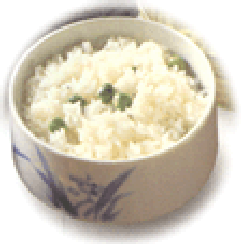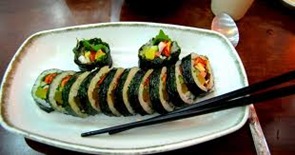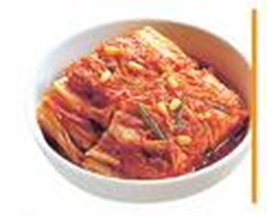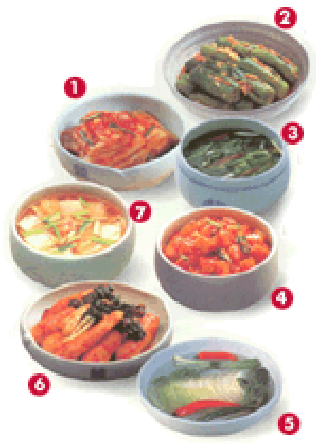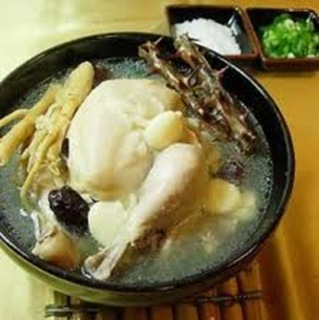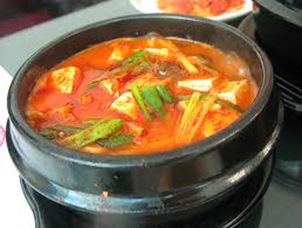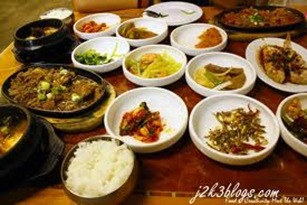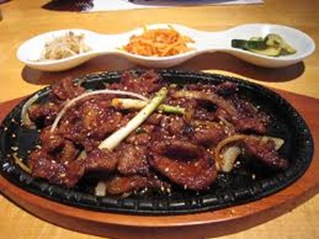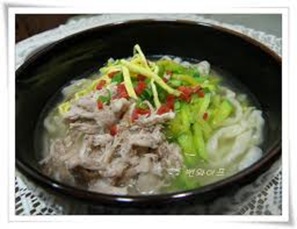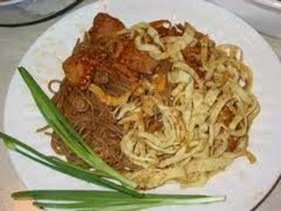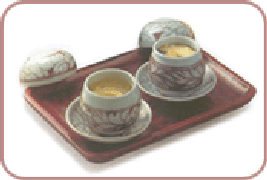New to Korean food, you don’t know what to order in a restaurant? Korean cuisine may seem intimidating especially to newcomers, with the array of side dishes at every meal and the different varieties of pickled dishes. Don’t worry, allow me to introduce you to a few of the more well-known Korean dishes. I hope that this quick introduction to Korean cuisine will give you all the basics you need to know.
The staple food of Korea is rice (bap). But Korean rice is different from most other rice in the world. It is known to Koreans, as sticky rice. Unlike rice from Southeast Asia, Korean rice is moist and sticks together rather than falling apart. It makes it easy to eat with chopsticks. Rice with kimchi, soup and some other vegetable side dishes is the typical meal eaten in most Korean homes.
I’m sure you must have heard of kimbap and bibimbap. Kimbap/gimbap which literally means seaweed rice can be compared to the Japanese sushi. Sushi uses a special vinegar rice in the making whereas not so in the Korean Kimbap. The seaweed paper used to wrap the rice and filling is called nori in Japanese and Gim or Kim in Korean. For the Kimbap, the rice is rolled up in a thin piece of dried seaweed and usually includes fried egg strips, cucumber, spinach, radish, imitation crabmeat and a couple of other vegetables.
A dish that is a welcome sight to vegetarians is the bibimbap, which literally means, mixed rice. Either in a large steel bowl or a piping hot earthenware bowl, a variety of vegetables and a spoonful or two of hot chili sauce piled on a bed of rice makes up the ingredients for the bibimbap. An egg is usually included and depending on the restaurant it could be fried or raw. A word of advice to all of you vegetarians out there, some places put some meat in their bibimbap, so make sure you say, ‘Gogi bbae juseyo’ to have it excluded.
The first thing that comes to mind when speaking of Korean cuisine is the Kimchi, eaten at almost every meal. There are many different kinds but most of them are made from cabbage mixed with various spices, most commonly garlic, chili pepper and ginger. Most foreigners who try kimchi for the first time are generally not overly impressed with the taste but like many things, it grows on you. You must have an acquired taste for it. Some people didn’t like the taste of it at first but have become addicted to it with the passing of time like some of my friends. Here are a few examples of the more popular kimchis
1.T'ong-baech'u Kimchi (cabbage head kimchi)
The classic Korean kimchi made with Chinese cabbage, served at almost every Korean meal.
2.O-e Sobaegi (stuffed cucumber kimchi)
Suitable for the summer months when people lose their appetite. Slit-cut cucumbers are stuffed with a mixture of vegetables and seasonings, and fermented a day or two.
3. Yeolmu Mul Kimchi (young radish water kimchi)
A popular kimchi in summer. Not spicy.
4.Kkaktugi (diced radish kimchi)
Made with big white radishes.
5. Tong-chi-mi (radish water kimchi)
Radishes are marinated in brine seasoned with garlic and ginger until fermented.
6. Ch'ong-gak Kimchi (bachelor radish kimchi)
Nice and crunchy. Unmarried Korean men traditionally wore their hair in a long braid. Radishes with tops were thought to resemble this head and ponytail.
7.Nabak Kimchi (sliced radish & cabbage kimchi)
The tangy juice is refreshing and fragrant.
Korean soups (tang) are eaten year round but enjoyed most, like the stews when the temperature drops to below freezing. Unlike the stews, spice is not a main ingredient Sam-gye tang is a delicious, healthy soup that is made with a whole chicken, ginseng, garlic and jujube. It's believed by Koreans to give one "stamina or energy." Kal-bi tang is made with boiled pork short ribs and most commonly green onions. The restaurant can make or break this soup depending on the quality of meat that is used. Sol-long tang is a hearty beef stock soup that you add salt to. Most of the soups, like most all Korean meals, are served with rice and plenty of side dishes.
Korean stews (chigae) generally have two things in common, they're hot and spicy. The most common stews, which are all served with rice, are kimchi chigae, dwen-jang chigae, soon-dubu chigae and boo-dae chigae. All of these stews can be quite spicy so remember to ask them to cut down on the spices if you cannot take too spicy food. Kimchi chigae is loaded with kimchi, small pieces of pork and various vegetables. Dwen-jang chigae is a soy bean paste based stew of vegetables and clams. If you like tofu, you'll love soon-dubu chigae. Vegetables, clams and an egg are added to this tofu bonanza. Boo-dae chigae originated from the Korean War. After the American soldiers finished eating, many times they had a little food remaining that they threw away. The Koreans were very poor at that time and they would go around collecting that thrown away food and cook it in a big pot and thus the birth of boo- chigae dae chigae. It includes slices of sausages, ham, glutinous rice, and other vegetables. Ramen noodles are usually added in as well.
Next come the side dishes which make a particular Korean meal go from good to excellent. There will always be some type of kimchi served as a side dish and normally anything from 2 to 6 others as well. Most common side dishes include spinach, potatoes, radishes, small black beans, bean sprouts, zucchini, seaweed and anchovies.
| Meat? Bul-gogi, which is beef strips marinated in salt, soy sauce, sesame oil and sugar, is one of the more popular dishes that most people order in a restaurant. The marinated beef strips are put on a grill and cooked over coals where you do your own table-top cooking. After the meat is cooked,take a piece and put it on a lettuce leaf with some rice, vegetables and other spices. Roll it up like a burrito and enjoy! There is also a dish called, twae-ji kalbi, which is the pork version of bul-gogi. |
| Dakkalbi is chicken mixed with some cabbage, onions, green onions, glutinous rice and a spicy hot sauce that makes it a popular choice among diners in Korea. Also the whole atmosphere of eating dalkkalbi adds to the taste. The contents are put on a large iron skillet and it's up to you to cook it.. There are also many other chicken dishes as well as beef and pork. |
Not in the mood for rice then how about giving noodles a try like kal-gook-su or naeng-myun? Kal-gook-su is a big bowl of steaming hot thick noodles with onions and sometimes clams thrown in. The noodles alone are a bit bland so add a spoonful of chili pepper sauce to spice it up. Naeng-myun, or cold noodles, is a dish with very thin buckwheat noodles that comes in two forms. Bi-bim (mixed) naeng-myun contains some vegetables, a lot of chili pepper sauce and mool (water) naengmyun contains vegetables, water, a splash of vinegar and very little or no chili pepper sauce
When you think about Korea, you probably don't think about scrumptious delicacies but there are many wonderful sweets for the sweet tooth. There are numerous store bought cookies, cakes, and other goodies made for export but it's the things that are mainly bought on the street or in restaurants that really taste fantastic. Ho-ddok is a fried sweet roll with cinnamon and a honey paste inside. Pot-bingsu is a cold dessert made with crushed ice. sweetened red beans, fruit and a sugary sauce on top. Boong-aw bbang is a hot bread with sweetened red beans inside. Ddeok/tteok is a very soft and chewy rice cake in various shapes, sizes and ingredients.
| Tea lovers, you must have your daily cuppa? There are lots of flavors for you to try. Unlike China and Japan, which are well known for their teas, Korea though not that well known, produces what are arguably the best teas in the world. The most famous tea(cha) in Korea is probably nok cha, or green tea. It's considered extremely healthy and has been linked to a variety of health benefits. If you like sweet teas try,mae-shil cha or ggool tae-chu cha.Check out omi-ja cha and you-ja cha for something a little more tart. Sweet teas Tart teas |
| Bitter teas |
|
Others
chik cha- arrowroot tea
nok cha- green tea
yul-moo cha- Job's Tears tea
Don’t worry, for you alcoholic drinkers, here’s what you can drink.
It's been said that Koreans consume more alcohol per capita than anywhere else in the world. Whether this is true or not is debatable but they do love their alcohol. Although beer is a staple at any bar, soju is the national liquor that is guzzled by all. It's cheap booze made from potatoes.
Makkoli and dong dong ju are traditional drinks made from rice and have a milky appearance. Makkoli can be found in most convenience stores. Drinking dong dong ju is a little more expensive but a cool experience. It's generally consumed in a more traditional, rustic establishment and is served out of a large bowl and poured into a separate cup with a ladle.
Well guess that wraps up what I have to say for today. With the keywords you’ve learnt like bap, tang, chigae etc I think you should be able to order your next meal in a restaurant. Watch out for Korean table manners in my next post, so see you around.
Special thanks and appreciation to the following
Photos and articles © courtesy:

